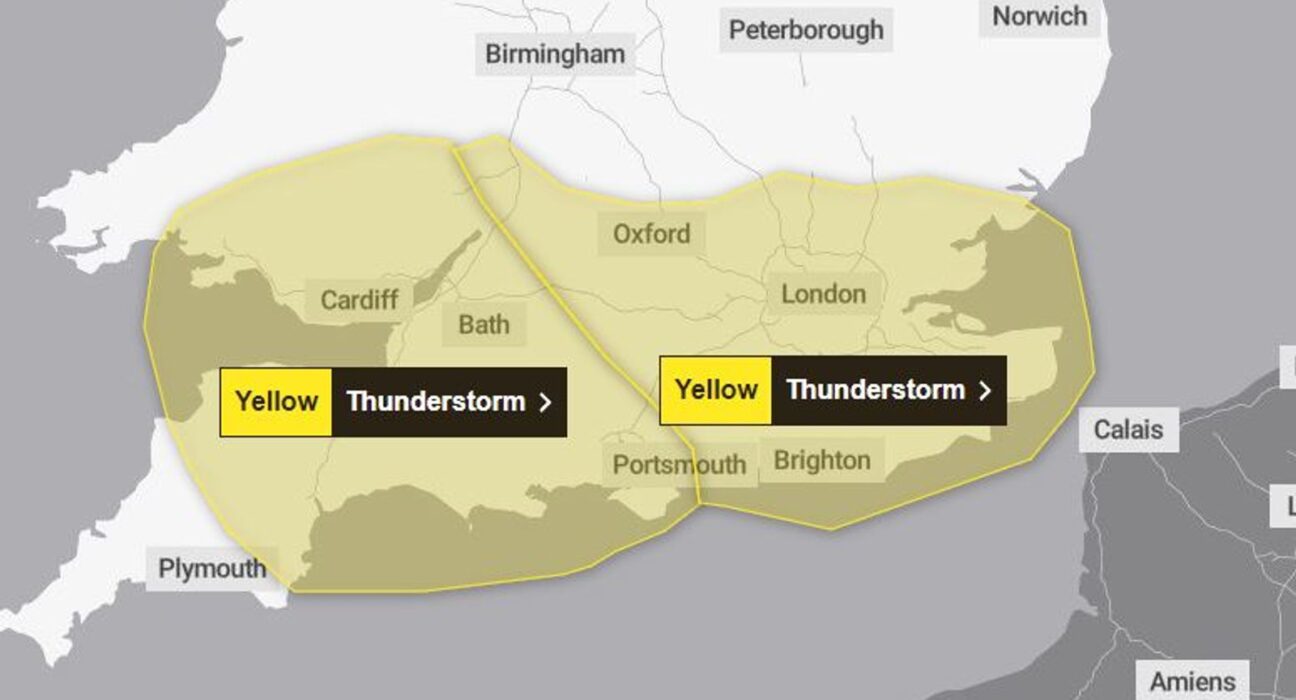On a seemingly ordinary morning, Anna was preparing to leave for work when her phone buzzed with a notification. A severe thunderstorm warning had been issued for her area. Anna decided to delay her departure and wait out the storm. As she watched from her window, the sky darkened, and heavy rain and strong winds swept through her neighborhood. Thanks to the timely weather warning, Anna avoided the dangers of driving in hazardous conditions, underscoring the critical role that weather warnings play in protecting lives and property.
The History and Evolution of Weather Warnings
The concept of weather warnings dates back centuries, with early methods relying on simple observation and folk wisdom. However, it was only in the development of meteorological science and technology in the 20th century that weather warnings became more accurate and widespread.
- Early Beginnings: The first organized weather warning systems were established in the mid-19th century, primarily focusing on maritime safety. The advent of the telegraph allowed for the rapid dissemination of storm warnings to coastal areas.
- Advancements in Technology: The introduction of radar in the 1940s and satellite technology in the 1960s revolutionized weather forecasting, enabling meteorologists to detect and track severe weather systems more accurately. These advancements laid the foundation for modern weather warning systems, which now utilize sophisticated computer models and real-time data to predict weather events.
Types of Weather Warnings
Weather warnings are issued to alert the public about potentially hazardous weather conditions. These warnings are typically categorized based on the severity and type of weather event:
- Severe Thunderstorm Warnings: Issued when thunderstorms are expected to produce damaging winds, large hail, or tornadoes. These warnings are crucial for preventing damage and injuries from extreme weather.
- Flood Warnings: These alerts warn of imminent or occurring flooding, often caused by excessive rainfall, river overflow, or coastal storm surges. Flash flood warnings are particularly urgent, as they indicate rapid flooding that poses immediate threats to life and property.
- Tornado Warnings: A warning indicates that a tornado has been sighted or detected by radar. These warnings are critical for prompting immediate protective actions, such as seeking shelter in a safe room or basement.
- Heat Warnings: Issued during periods of extreme heat, these warnings advise the public to take precautions to avoid heat-related illnesses. Heatwaves can be particularly dangerous for vulnerable populations, such as the elderly and those with pre-existing health conditions.
- Winter Storm Warnings: These warnings alert the public to significant winter weather, including heavy snowfall, ice accumulation, and blizzards. They are vital for preparing for disruptions in travel and power outages.
Effectiveness and Impact of Weather Warnings
Weather warnings are vital for public safety. They provide critical information that helps individuals and communities prepare for and respond to hazardous weather events.
- Life-Saving Potential: According to the National Weather Service (NWS), timely warnings and public awareness campaigns have significantly reduced the number of fatalities and injuries caused by severe weather. For example, the NWS reports that the introduction of tornado warnings in the 1950s has saved thousands of lives by giving people time to seek shelter.
- Economic Impact: Effective weather warnings can also mitigate economic losses. A study by the National Oceanic and Atmospheric Administration (NOAA) estimated that weather-related disasters cost the United States an average of $1 billion annually in damages. Early warnings allow for preventative measures, such as evacuations and securing property, which can reduce these losses.
- Public Perception and Response: Research indicates that the public’s response to weather warnings varies based on factors such as the perceived severity of the threat, past experiences, and the clarity of the warning message. For example, a study published in the Bulletin of the American Meteorological Society found that clear and specific warnings are more likely to prompt protective actions.
Challenges in Weather Warning Systems
Despite advancements, weather warning systems face several challenges that can impact their effectiveness:
- False Alarms: One of the significant challenges is the occurrence of false alarms, which can lead to public complacency and skepticism about future warnings. The NWS strives to balance warning accuracy with the need to provide timely alerts, but false alarms can erode public trust.
- Communication Barriers: Effective communication of weather warnings is crucial. Language barriers, lack of access to communication technology, and misinformation can hinder the dissemination of warnings, particularly in vulnerable communities.
- Rapidly Evolving Weather Conditions: Some weather events, such as tornadoes, can develop and change rapidly, making it challenging to issue timely and accurate warnings. Improvements in forecasting technology and communication infrastructure are needed to address these challenges.
The Future of Weather Warnings
As technology advances, the accuracy and timeliness of weather warnings are expected to improve, offering even more excellent protection for communities.
- Emerging Technologies: Innovations such as machine learning and artificial intelligence are being explored to enhance forecasting models and predict weather patterns more precisely. These technologies can help meteorologists quickly analyze vast amounts of data and provide more accurate warnings.
- Public Engagement and Education: Increasing public awareness and education about weather safety is crucial for improving the effectiveness of warnings. Programs that teach individuals how to respond to different weather warnings can save lives and reduce property damage.
- Global Collaboration: Climate change is expected to increase the frequency and intensity of extreme weather events. Worldwide collaboration and information sharing among meteorological organizations can enhance the accuracy of weather warnings and help communities worldwide prepare for these challenges.
Conclusion: The Lifeline of Weather Warnings
Weather warnings are a critical component of public safety, providing essential information that helps protect lives and property from the dangers of severe weather. While challenges remain, continuous advancements in technology and public education offer promising prospects for enhancing the effectiveness of these warnings. As we navigate an era of changing climate patterns, the importance of reliable weather warning systems cannot be overstated. By staying informed and prepared, we can mitigate the impacts of extreme weather and safeguard our communities.






